
Best edible flowers for the garden
to sow or plant in your garden
Contents
Eating flowers has become a real culinary trend, but it’s not new! This practice, which involves adding edible flowers to our dishes, dates back to Antiquity and the Middle Ages, where edible flowers were already on the menu. Today, they bloom on our plates, both for their aesthetics and their flavours. Edible flowers delight our taste buds as much as our eyes. They can be used both raw and cooked. Colourful and delicate, they bring cheerfulness and sometimes surprising aromas to our preparations. Think, for example, of an edible flower on a cake, such as a violet or a pansy that enhances both desserts and salads. They are often very nutritious and packed with benefits. However, these edible flowers should be used in small touches, like condiments, as some are such fragrant powerhouses that a small amount is sufficient. If you wish to grow them at home, there are many edible flowers to plant or sow, perfect for naturally enhancing your dishes. In this article, discover our must-have edible flowers list!
Practical guide to edible flowers
Before delving into each species of flower in more detail, this summary table allows you to quickly visualise the main edible flowers. It specifies for each one its unique taste, the part(s) used, as well as its most common culinary applications.
| Flower Name | Taste | Consumed Part | Culinary Use |
|---|---|---|---|
| Nasturtium | Peppery and spicy | Flowers, leaves, seeds | Salads, dressings, pickled buds |
| Borage | Oyster-like, briny flavour | Flowers, young leaves | Salads, ice cubes, soup, herbal tea |
| Daylily (Hemerocallis) | Sweet bean-like taste | Flowers, buds, young shoots | Salads, stuffed dishes, fritters |
| Pansy | Sweet and sugary | Flowers | Cakes, salads, syrup |
| Marigold (Calendula) | Saffron-like taste | Petals, buds | Salads, rice, butter, sauces |
| Rose | Floral and sweet | Petals, hips | Jams, syrups, desserts |
| Geranium | |||
| Lavender | Camphor-like and sweet | Flowers | Syrups, flavoured sugar, ice creams |
| Marigold | Passion fruit flavour | Petals | Salads, lemonade, butter |
| Flowers of Courgettes | Delicate nutty flavour | Male flowers | Fritters, stuffed dishes, sautéed |
| Mallow | Sweet, marshmallow flavour | Flowers | Salads, pastries, candied |
| Sunflower | Honeyed, light nutty taste | Petals, seeds, buds | Salads, roasted seeds, cooked buds |
| Hibiscus | Tart, red fruit flavour | Flowers | Infusions, syrups, jellies |
| Dahlias | Bitter or sweet depending on the variety | Petals, tubercles | Salads, soups, grated as a vegetable |
| Agastache | Aniseed or menthol | Flowers, leaves | Salads, desserts, teas |
| Monarda | Bergamot flavour, menthol | Flowers, leaves | Teas, syrups, fruit salads |
| Sages | Camphor-like and musky | Flowers, leaves | Infusions, savoury dishes, pastries |
Nasturtium: peppery and spicy flavour
Certainly the best-known of edible flowers ! The Nasturtium (Tropaeolum majus) forms a tapetum of flowers from May until the first frosts. Its peppery flavour is reminiscent of watercress. It is rich in vitamin C. Whole or chopped, the flowers and leaves can be eaten in salads, preferably raw to preserve the vitamins. The flower buds can be used pickled like capers. The still green seeds can be sprinkled in salads. They have a flavour similar to radish.
- Consumed parts: buds, flowers, leaves, and seeds.
- Uses: salad, infusion, decoction.
Also read: How to sow nasturtiums
Discover other Edible flowers
View all →Available in 1 sizes
Available in 1 sizes
Available in 1 sizes
Available in 1 sizes
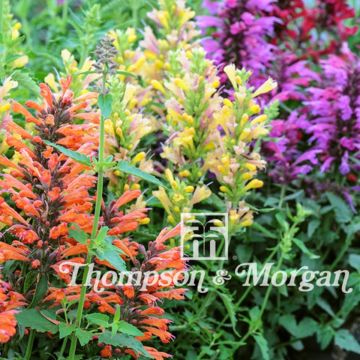
Available in 1 sizes
Available in 2 sizes
Available in 1 sizes
Available in 1 sizes
Available in 1 sizes
Available in 1 sizes
Borage: oyster-flavoured, briny
The starry flowers of Borage (Borago officinalis) are very decorative. They are harvested from April until the frosts. They have a briny taste while the leaves remind one of the tangy flavour of cucumber. However, they should be consumed in moderation due to their high alkaloid content. The flowers can also be used to make very original ice cubes.
- Edible parts: flowers and young leaves.
- Usage: flowers (remove the peduncles) and finely chopped raw leaves in salads (remove the toughest parts), leaves in soup, herbal tea. Perfect edible flower for a cake!
Also read: How to easily sow borage for a flowering and edible garden?
Daylily: sweet bean flavour
Each Daylily (Hemerocallis) flower lasts only one day, but they renew throughout the month of July. Certain species are to be preferred, such as ‘fulva’, whose petals are crunchy and tasty, as well as ‘Buttercup’, which is very flavoursome. The buds, young shoots, and flowers can be consumed cooked or raw in salads. The tubercles are prepared like potatoes.
- Consumed parts: buds, flowers, young shoots, and tubercles.
- Uses: salad, soup, stuffed, glazed, frying.
Pansy: sweet and sugary
Pansies (Viola) have a sweet and sugary flavour. Raw, this cousin of the violet beautifully enhances salads and decorates pastries. They are in bloom from autumn to late spring. Note that some varieties, such as ‘Tasty’, have even been selected for their taste qualities.
- Edible parts: flowers (remove the bitter peduncle).
- Uses: salad, flavour butter and creams, syrup. Pansy is the ideal edible flower on a cake.
To read: Edible flowers: pansies in the kitchen!
Marigold or Calendula: saffron-flavoured taste
The Marigold (Calendula officinalis) is not just for cosmetics. It can be harvested from early spring until the frosts. Its fragrance resembles saffron, making it a good substitute. Don’t hesitate to sprinkle a handful of fresh petals in your salads. Dried, they add colour to cakes and rice. The buds can be preserved in vinegar.
- Edible parts: buds and flowers.
- Uses: salad, soup, butter, sauce, drink, biscuits.
Rose: floral and sweet flavour
The petals of Rose, when dried, flavour tea. Crystallised in sugar, they decorate cakes. One can make jams and jellies that are highly appreciated with the petals and fruits.
- Consumed parts: flowers and fruits (the hips)
- Uses: tea, crystallised, jam, syrup, jelly, rose water.
Also read: Cooking with roses
Scented Geranium or Pelargonium: Lemon and Floral Flavour
Indeed, the “Geranium” or Pelargonium (P. fragrans, P. graveolens, P. crispum, etc.) is edible. The leaves of the most fragrant species are infused. In summer, the raw flowers enhance salads. They can be crystallised to decorate cakes.
- Consumed parts: flowers and leaves.
- Uses: salad, candied, flower water, crystallised, jam and jelly, herbal tea.
Lavender: strong camphoraceous and sweet flavour
True or common lavender (Lavandula angustifolia or officinalis) is also edible, but it should be used sparingly, as its powerful fragrance will overpower any other flavour.
- Consumed parts: flowers, leaves as a herb.
- Uses: infusion, ice cream, to flavour sugar, desserts, fruit salad, crystallised for decoration.
Also read: How to make lavender syrup?
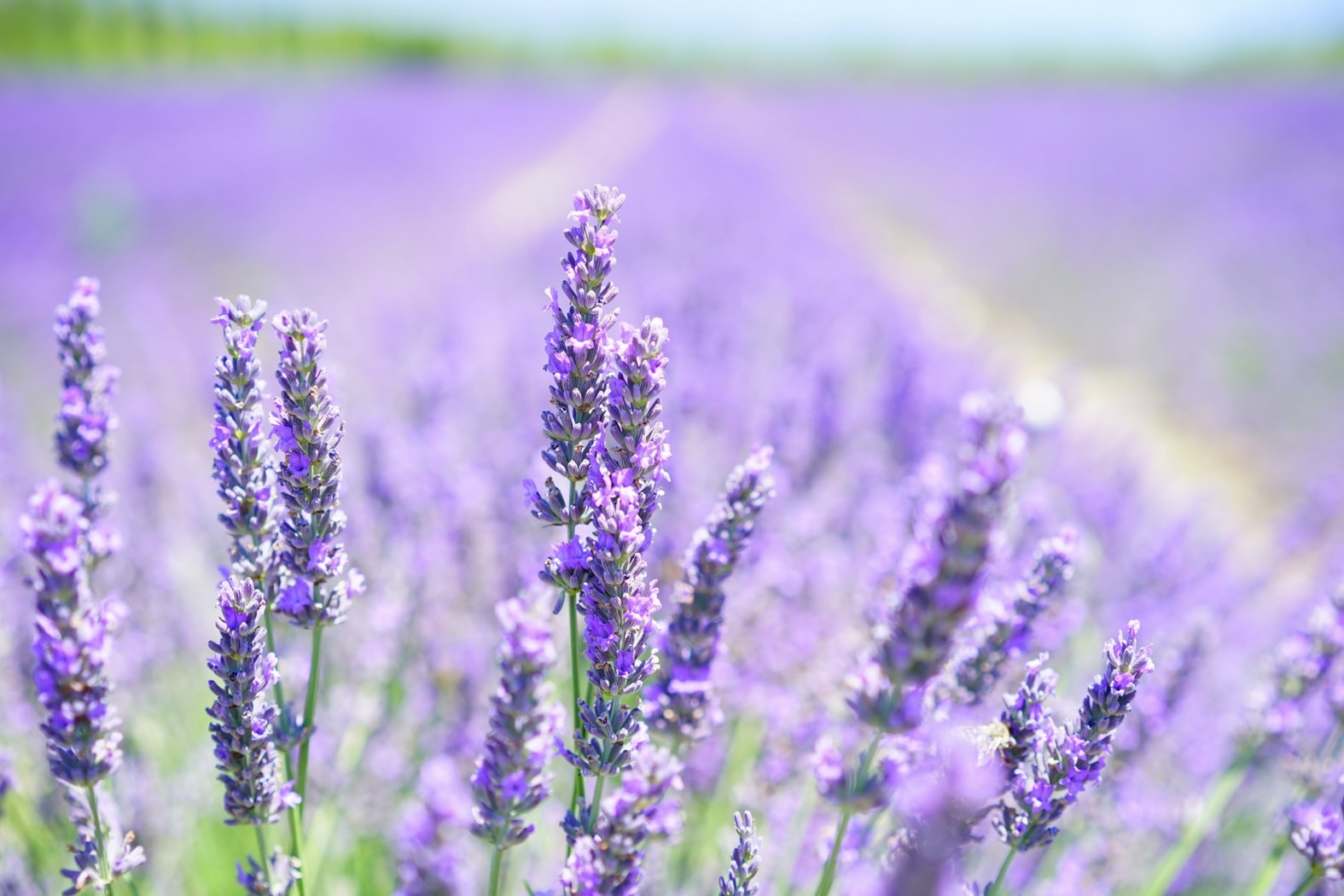
Lavender – Lavendula angustifolia
Marigold or Tagetes: Passion fruit flavour
The Marigold (Tagetes tenuifolia, Tagetes lucida, Tagetes patula, etc.) blooms in spring and summer. It is a good companion for tomatoes, but not only: its citrus scent is very refreshing in salads.
- Edible parts: flowers.
- Uses: salad, herbal tea, butter, confit, lemonade.

The marigold or Tagetes
Squashes and Zucchinis: Delicate Nutty Flavour
The flowers of squashes and courgettes, our beloved cucurbits, can be picked. It is best to learn to distinguish the males (smooth, without swelling at the base) from the female squashes, lest you deprive yourself of their fruits. They hold up well to cooking. You can also stuff them before baking or make the famous fritters from the Nice region.
- Consumed parts: male flowers (thin, non-swollen stem).
- Usage: salad, fritters.
- Also read: Making courgette flower fritters
Mallow: sweet, marshmallow flavour
The Mallow (Malva moschata and sylvestris) offers us beautiful flowers in summer. They delight our eyes, but also our papillae: raw, they enhance salads or crystallised, they decorate pastries.
- Consumed parts: flowers.
- Uses: salad, confit, crystallised.

Mallow – Malva sylvestris
Sunflower: honeyed, light walnut flavour
The petals of the Sunflower (Helianthus annuus) have a sweet, honeyed flavour, delicious in summer salads. The seeds can be consumed roasted or toasted. The flower buds can be steamed or baked in a gratin.
- Consumed parts: buds, seeds, and petals.
- Uses: salad, cooked.
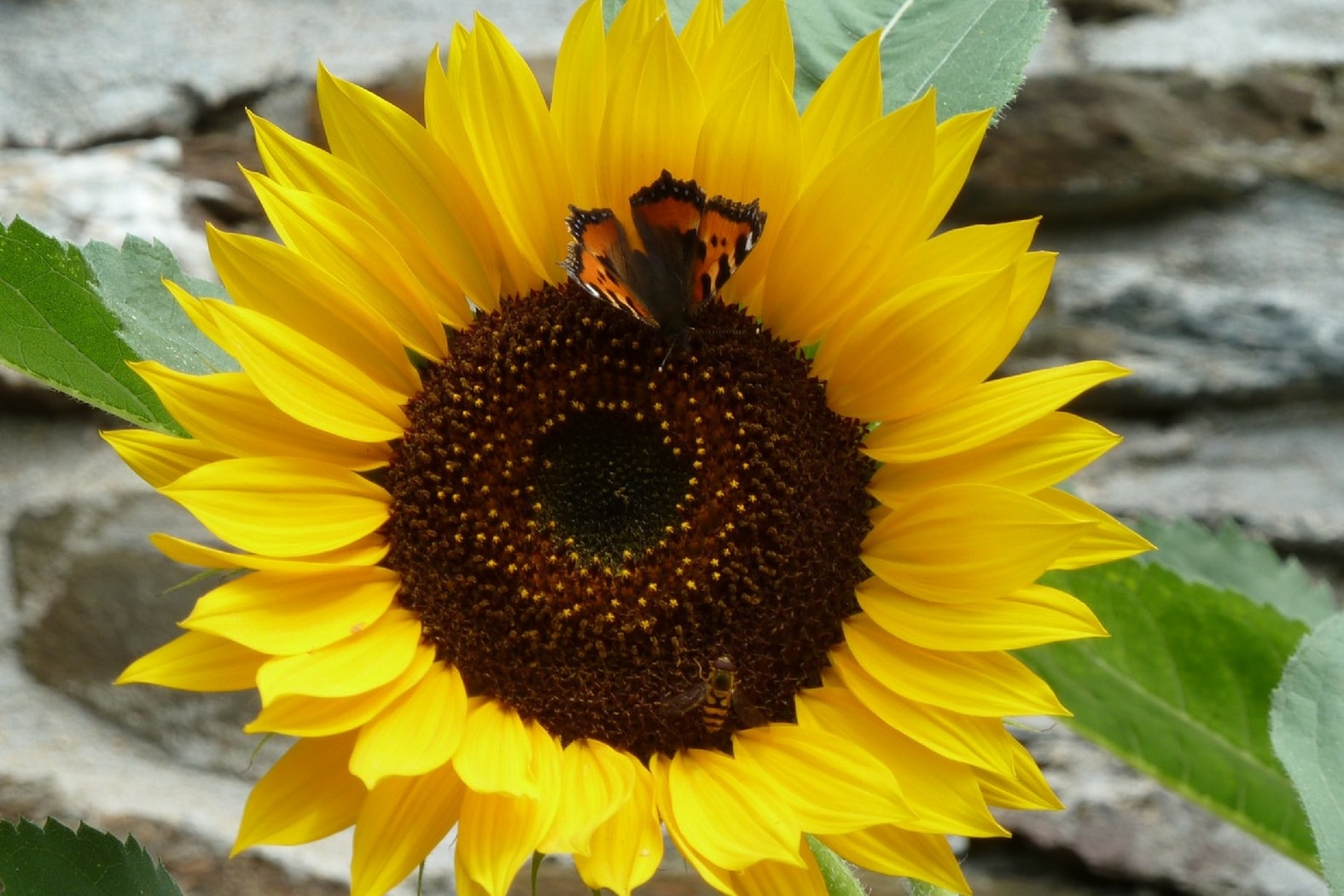
Sunflower – Helianthus annuus
Hibiscus: tangy, red fruit flavour
The Hibiscus (H. syriacus) flowers continuously throughout the summer, adding a lovely exotic touch to the garden that you can enjoy if you take the time to make a syrup that will deliciously flavour your fruit salads.
- Edible parts: flowers.
- Uses: infusion, syrup.
Also read: How to dry hibiscus flowers?
Dahlias: slightly bitter, peppery, herbaceous
Dahlias are the undisputed stars of summer. They brighten up the garden and the edges of the vegetable patch, rightly so, as they are edible. Their raw petals in salads have a more or less bitter or sweet flavour depending on the variety (you’ll need to taste them first). They also flavour vegetable soups.
- Consumed parts: flowers.
- Uses: salad, soup.
Agastache: aniseed or menthol flavour
The Agastache (A. rugosa as well as horticultural varieties such as ‘Blue Fortune’) is a highly valued perennial in flower beds. Its leaves exude a flavour and a fragrance that is either sweet or aniseed depending on the variety. They can be added to salads, fresh or dried, and lend a pleasant note to dishes.
- Consumed parts: flowers and leaves.
- Uses: salad, sauces, cakes, tea.
Also read: How to sow Agastache?
Monarda: bergamot flavour, mentholated
The Monarda (Monarda) produces, in summer, slightly sweet flowers with an aftertaste of mint and bergamot. Its fresh leaves are used in cooking: chopped, they flavour salads. Be careful, its fragrance is intense, use it sparingly so it doesn’t overpower the flavours of the dishes.
- Consumed parts: flowers and leaves.
- Uses: salad, cream, fruit salad, crystallised, syrup, spice.
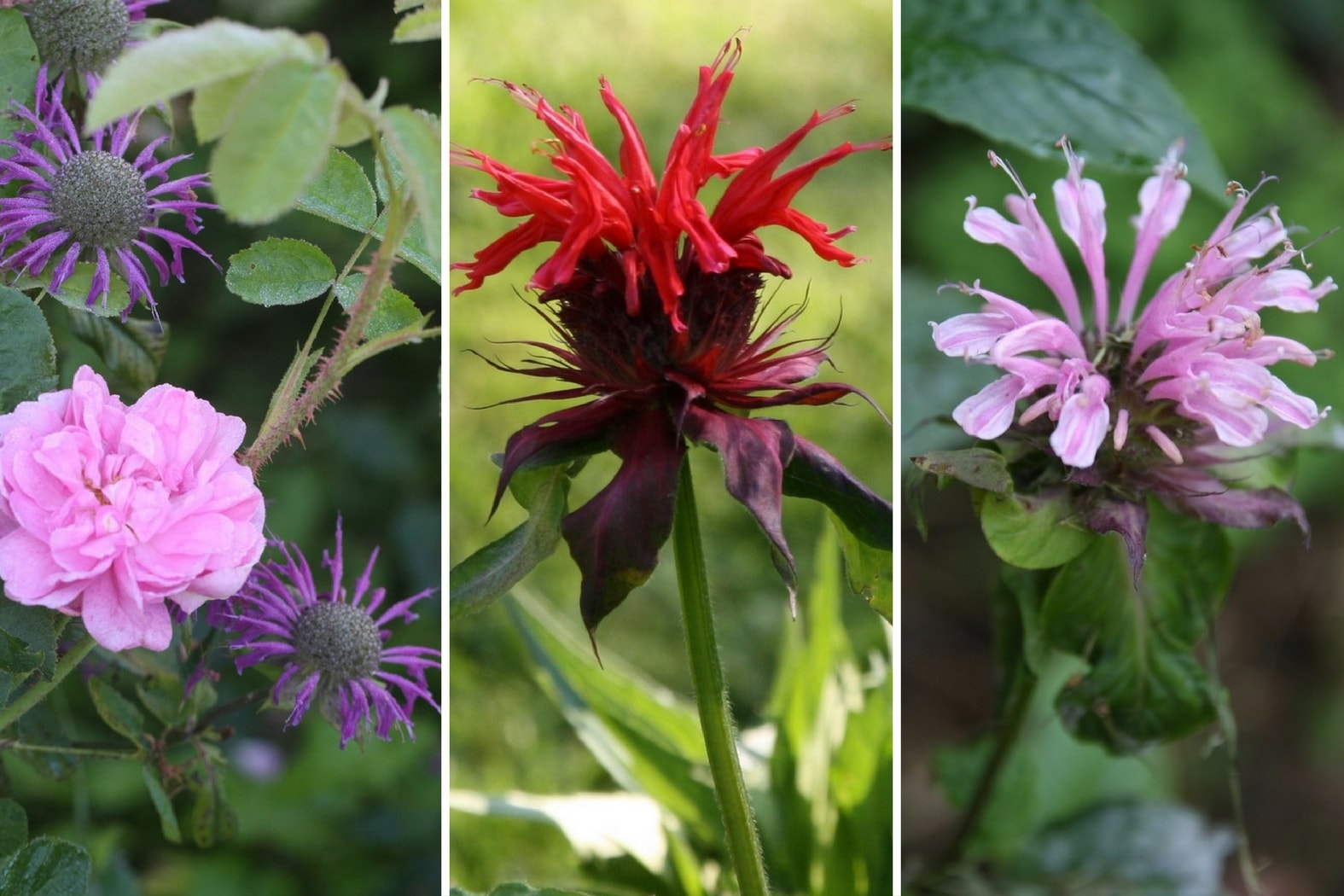
Monarda ‘Scorpion’ – M. ‘Cambridge Scarlet’ – M. ‘Beauty of Cobham’
Sages: fruity to camphoraceous flavour depending on the variety
The flowering of Sages (Salvia officinale, Salvia patens and other aromatic sages) occurs in summer or autumn for the delightful Pineapple Sage (Salvia elegans). The flowers and leaves of this variety enhance fruit salads and flavour cakes.
- Edible parts: flowers and leaves.
- Uses: infusion, salad, cakes, fruit salad.
Wisteria: fruity, floral, sweet taste
The tubers of the Wisteria do not hold a monopoly on edibility: the classic Wisteria (Wisteria sinensis), which brightens up the month of May, is also consumable. The flowers detached from the clusters are sprinkled raw in salads, which is very decorative. They are just as tasty in fritters… but beware, only the flowers are edible: the rest of the plant is toxic.
- Consumed parts: buds and flowers (the rest of the plant is toxic).
- Uses: salad, fritters.
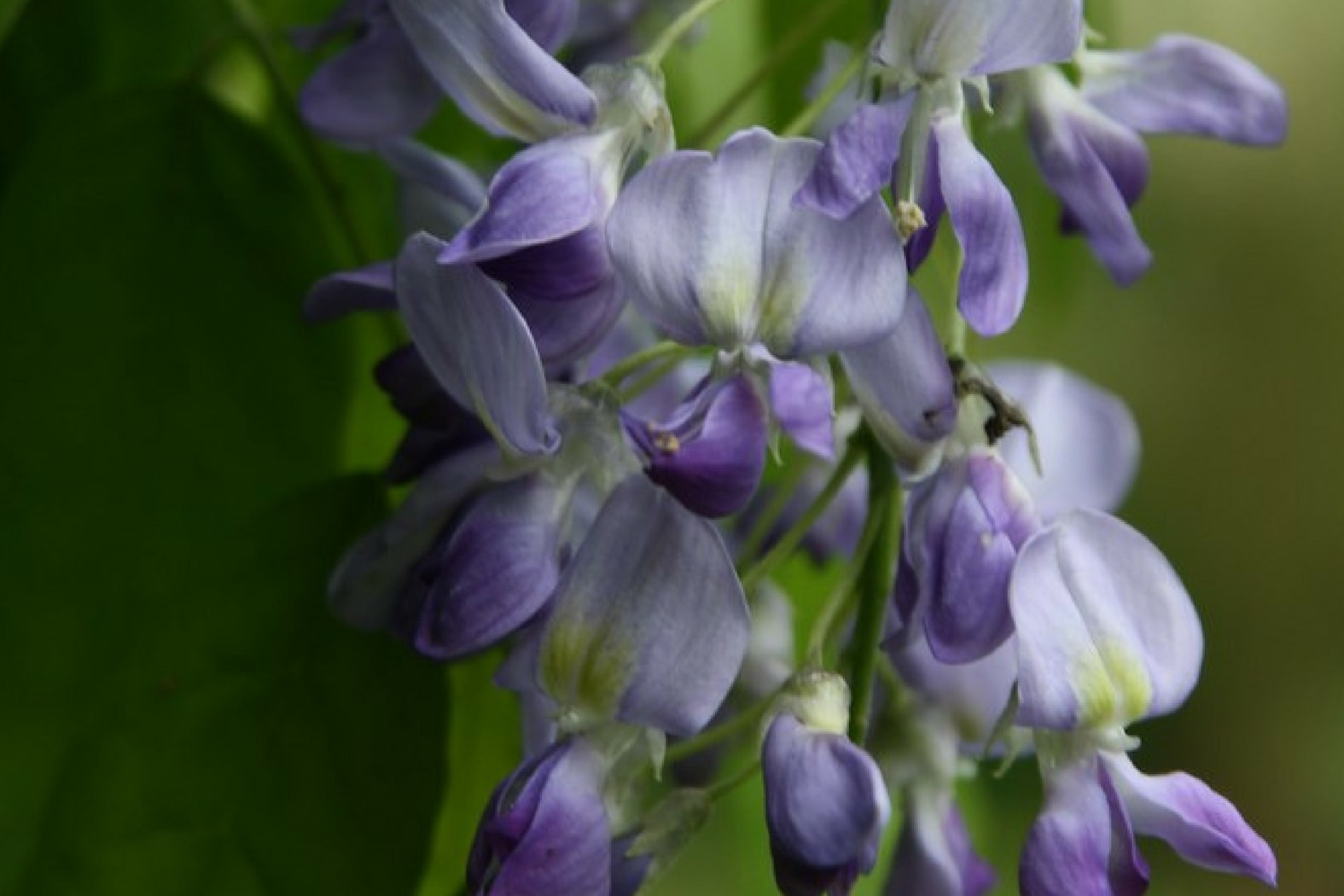
Wisteria – Wisteria sinensis
Discover even more edible flowers
There are still many edible flowers to explore! Among the edible flowers to plant or sow to continue to awaken your curiosity and enrich your cooking: Begonia, Violet (an edible flower too!), Chive and Chinese chive flowers, Phlox, Lilac, Woodruff, Cosmos, Campanula, Tulip, Chamomile, Poppy flower, Hollyhock, Magnolia, Chrysanthemum, Daisy, Cherry blossom, Wild rose, Thyme flower, (and all the flowers of aromatic plants), Poet’s Carnation, Cornflower, Mimosa.
Choose from our selection of edible flowers!
Where to find these edible flowers?
Our gardens are home to many edible plants; you just need to know them and visit during the right season to return with a little filled basket. However, let’s remember an essential rule of common sense: only eat flowers whose identity you are certain of.
If you have just purchased a plant, wait at least a month before consuming it, to allow any fertilisers present to dissipate. Always prefer young plants from organic farming. Be careful not to consume flowers from conventional florists: they are generally treated with very toxic pesticides.
Ideally, as you will easily understand, it is best to grow them yourself in your garden, without chemical fertilisers and without pesticides, of course!
If you live in a city without a garden, know that herbal shops and grocery stores sell dried flowers or leaves intended for infusions or decoration. Fresh flowers may be available in trays at some markets and specialty stores (sometimes at astronomical prices, I prefer to warn you).
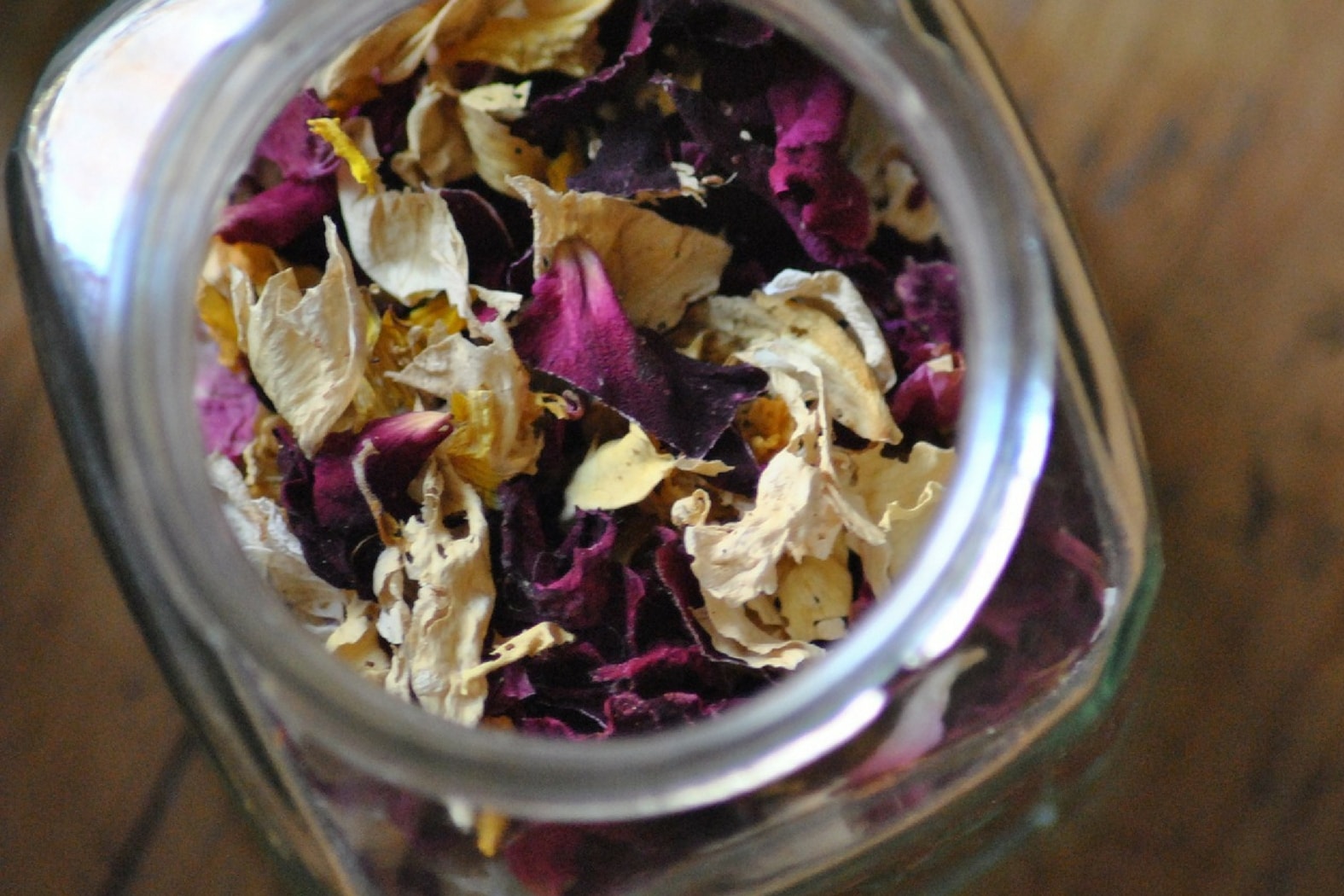
For those lucky enough to be in the south, a Nice-based company, Marius Auda, offers a beautiful range of aromatic herbs, young salad shoots, edible flowers, and you will even find some recipes on their site.
Finally, although only lavender and sages are mentioned, all flowers from aromatic plants are edible: chives, thyme, rosemary, mints, fennel, basil, coriander, etc. All that’s left is for you to be tempted and let your creativity shine.
Storage of Edible Flowers
-
Refrigeration: Store edible flowers in slightly damp absorbent paper, placed in an airtight box in the refrigerator. They will stay fresh for 2 to 5 days.
-
Freezing: For longer storage, you can freeze them in ice cube trays filled with water. Ideal for flavouring or decorating drinks.
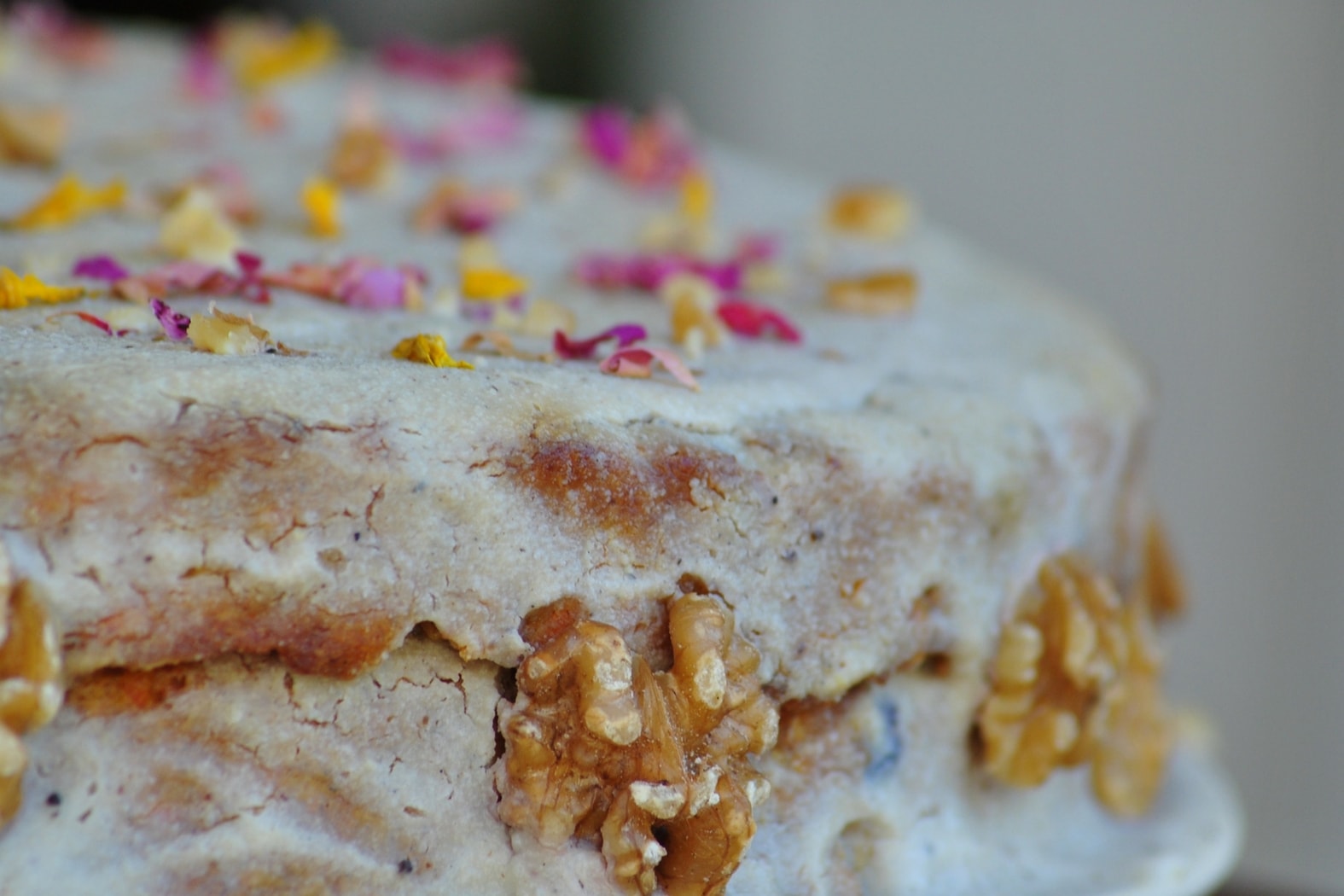
Precautions to take before eating edible flowers
- Check that the flower is edible and non-toxic.
- Ensure it has not been treated with pesticidal products.
- Wash them gently before consumption.
- Introduce them in small quantities to avoid any allergic reaction, especially with Asteraceae (such as marigolds or daisies), which can cause reactions in sensitive individuals.
- Subscribe!
- Contents
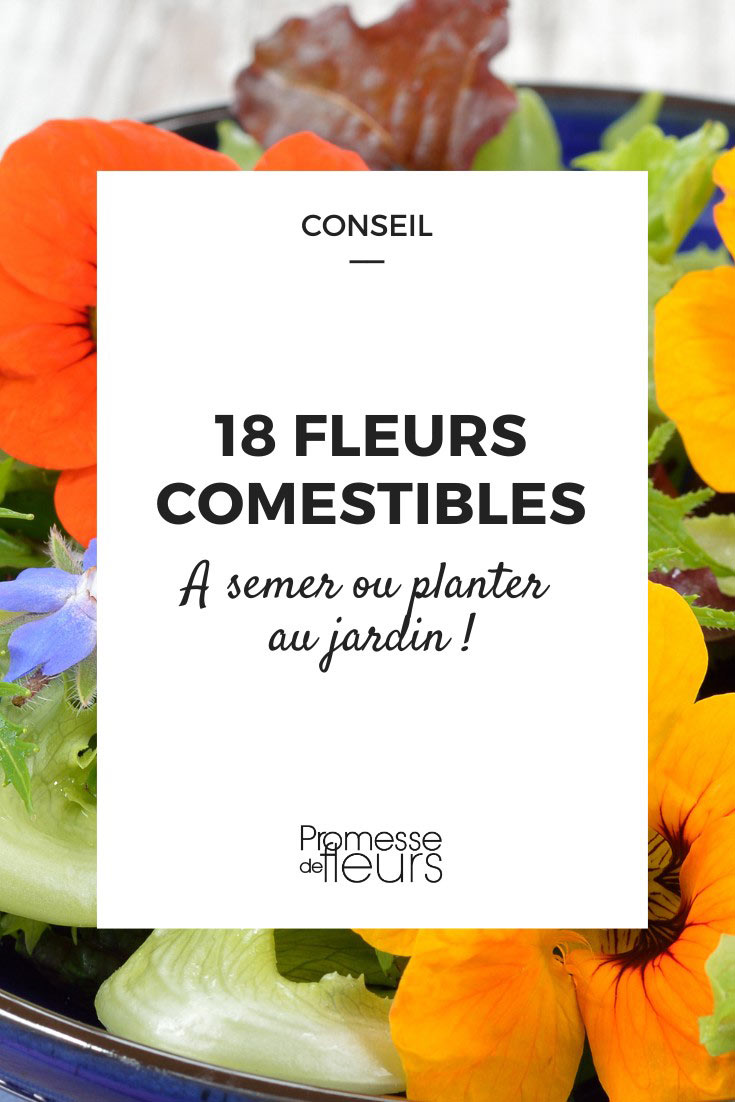































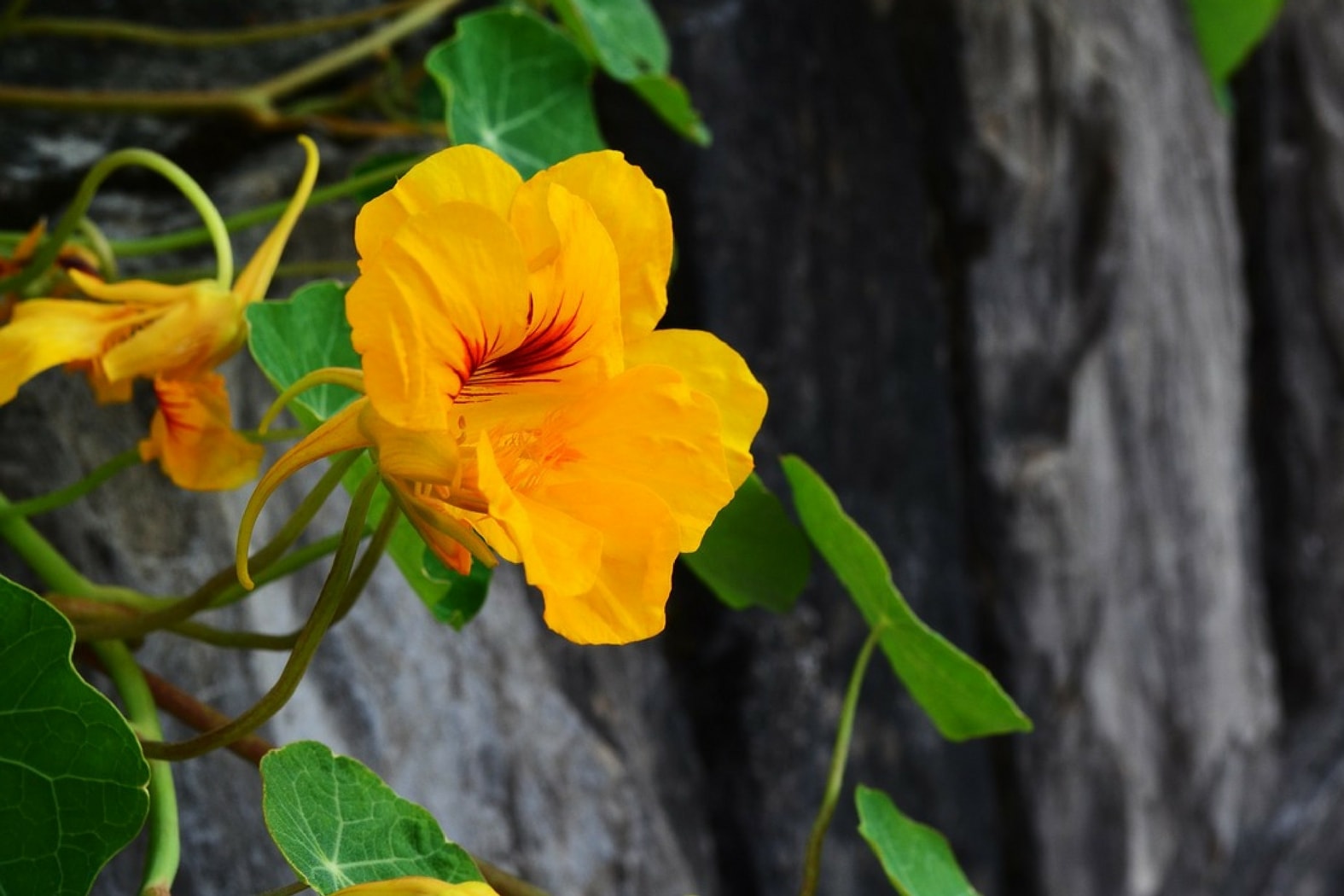
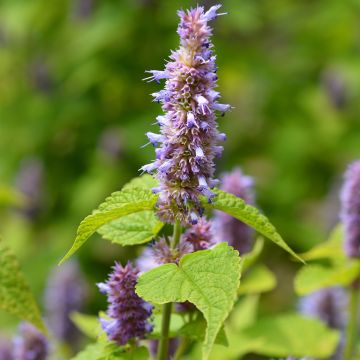
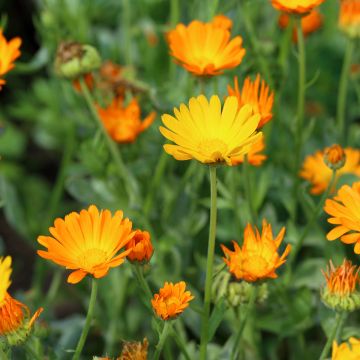
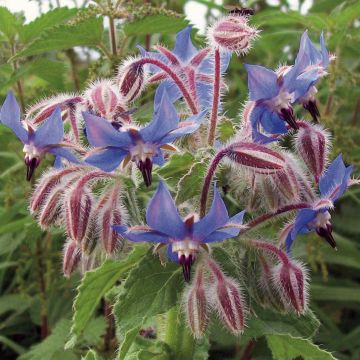
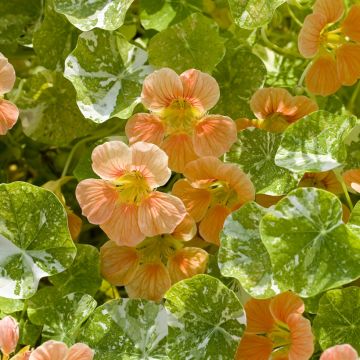
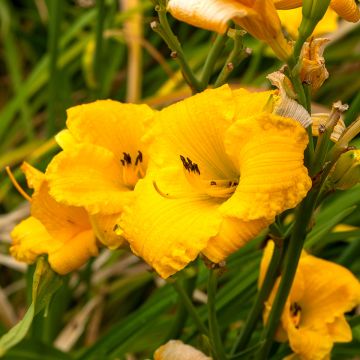
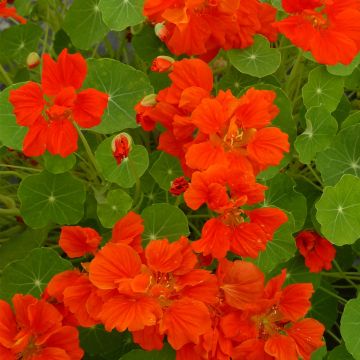
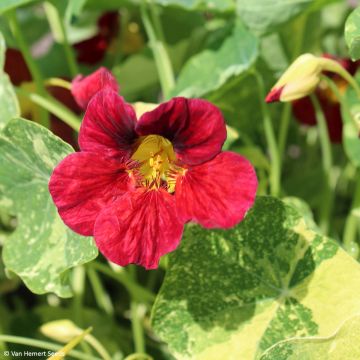
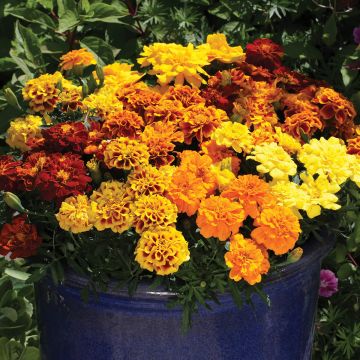
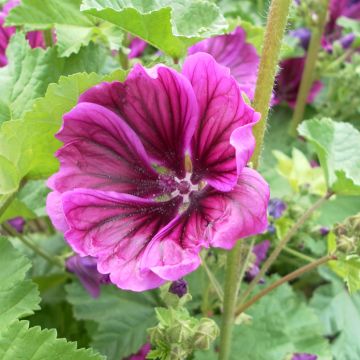
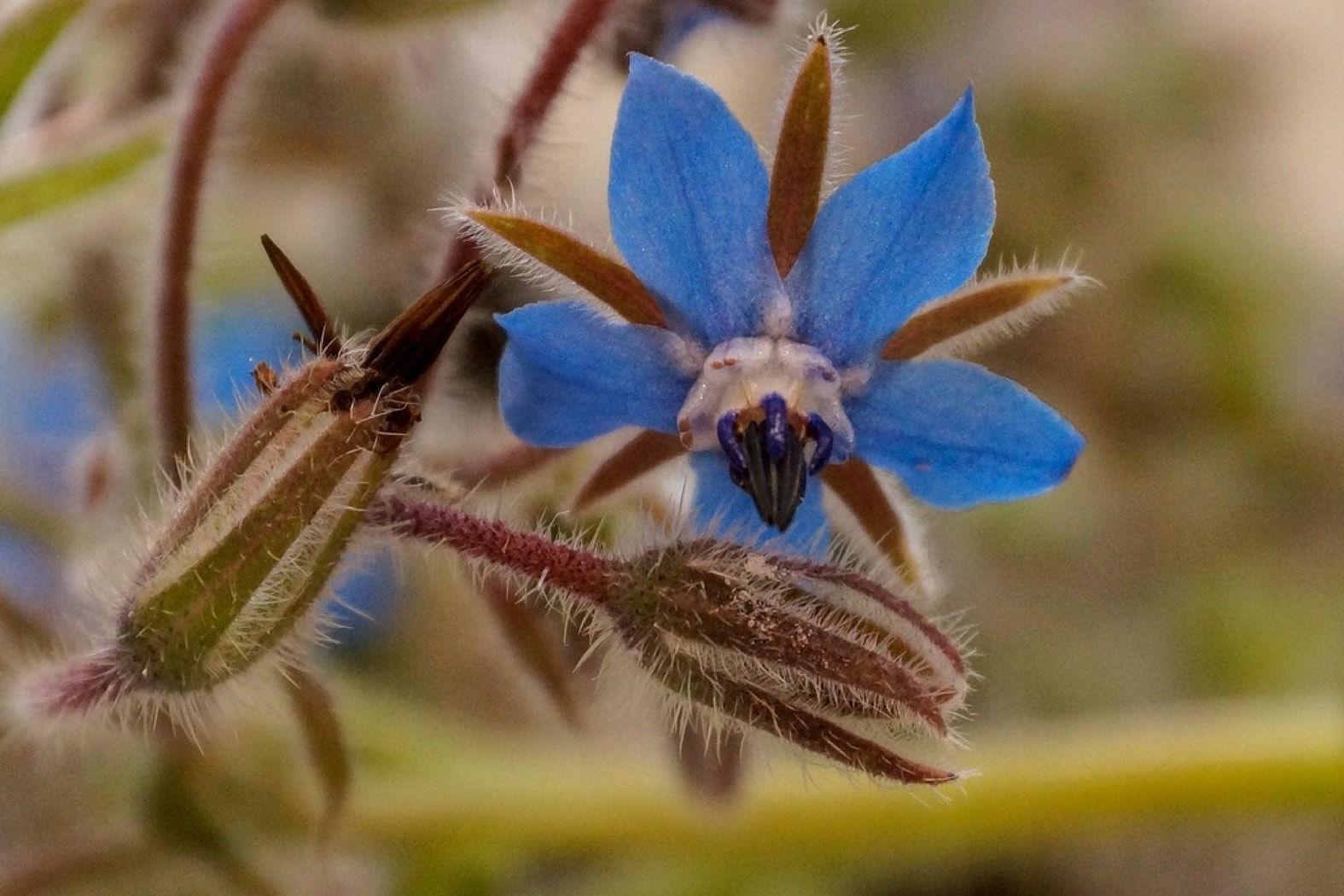
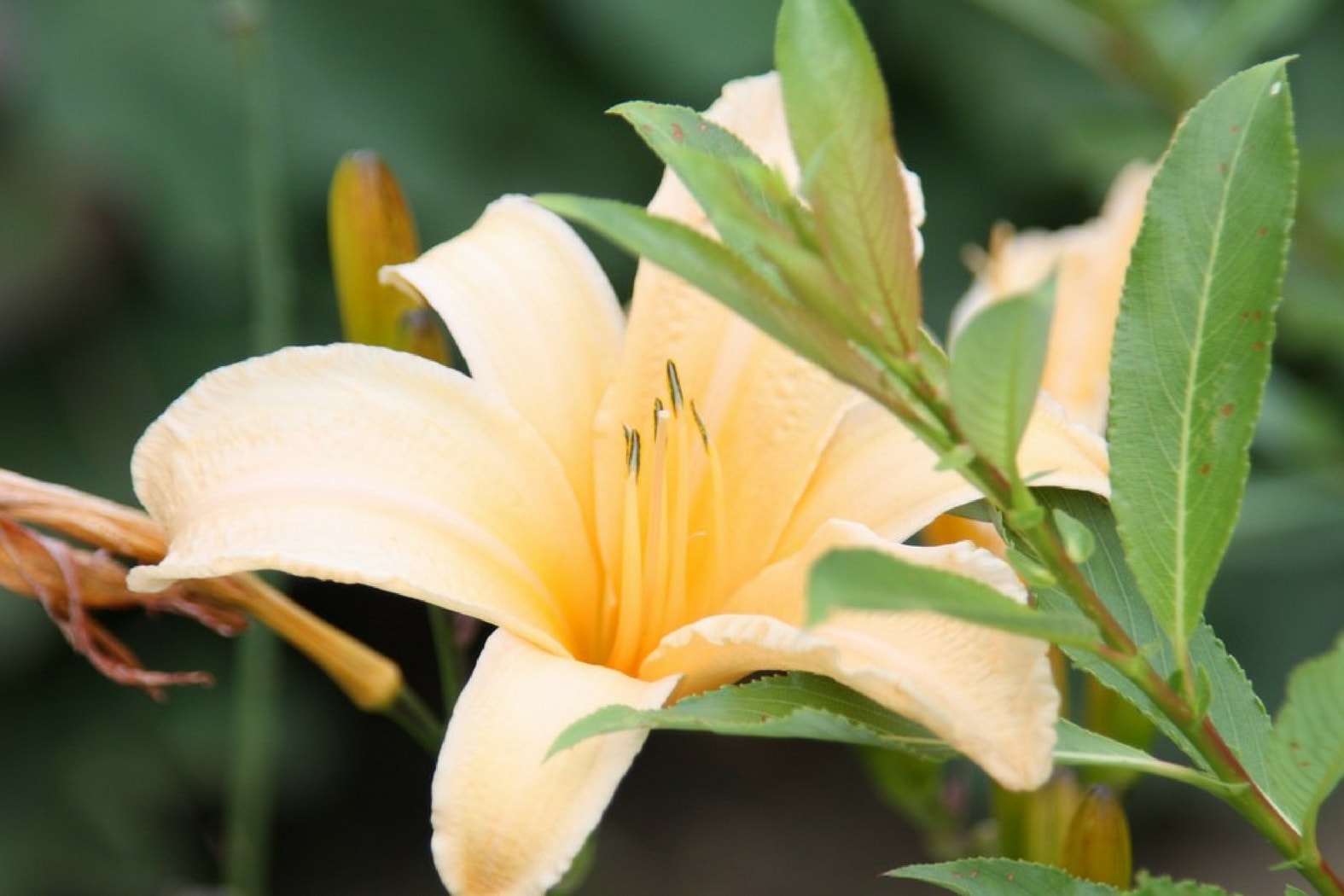
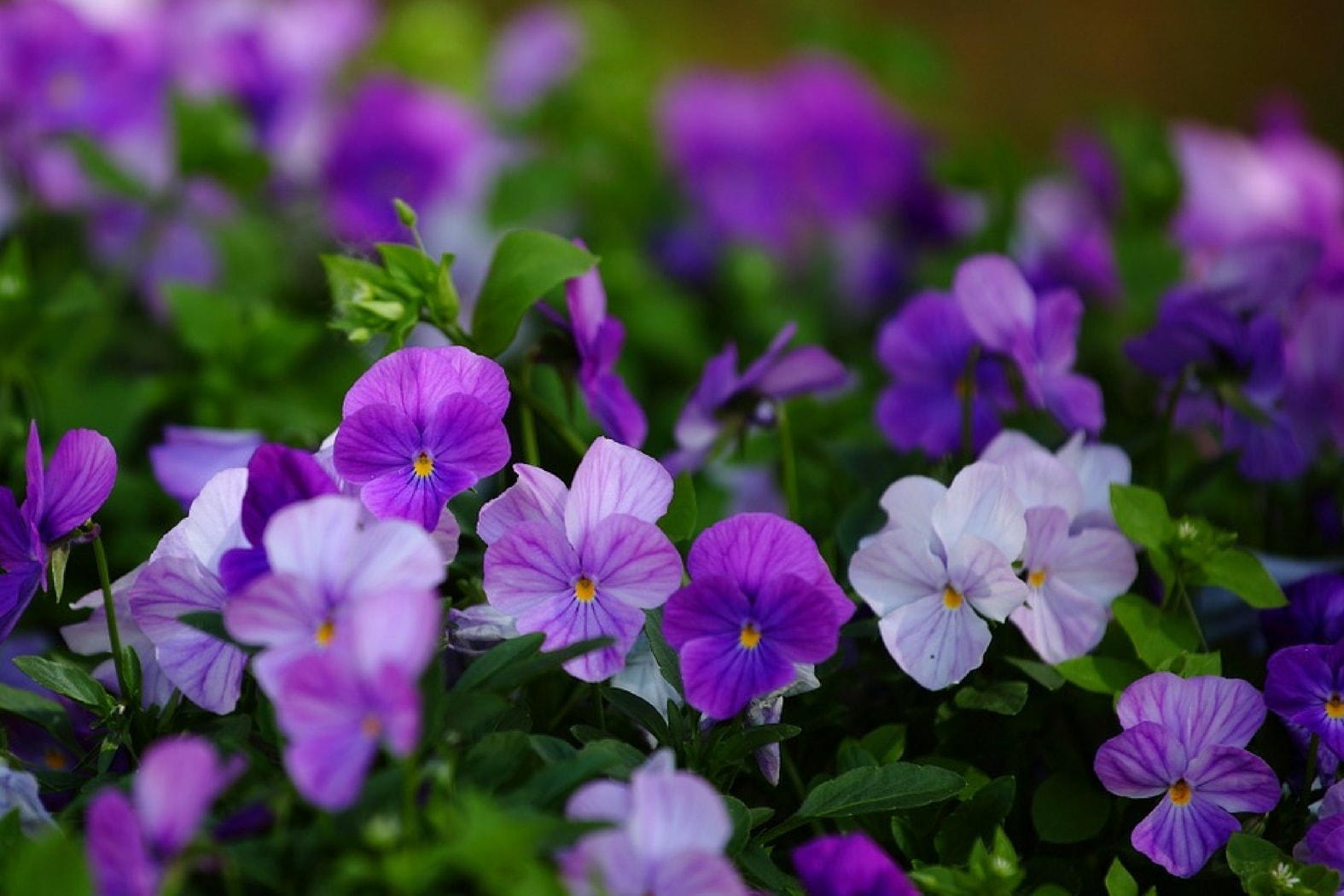
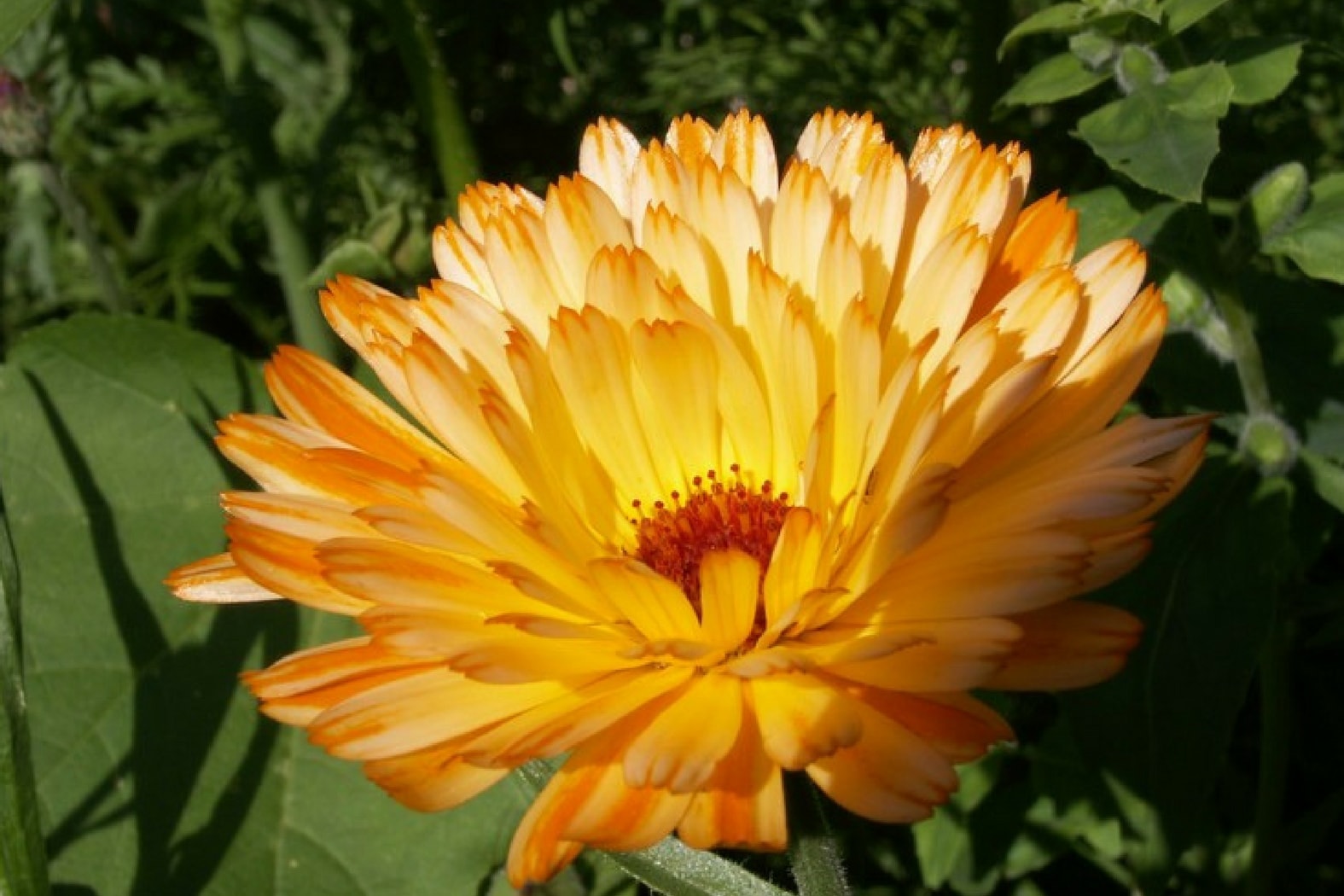
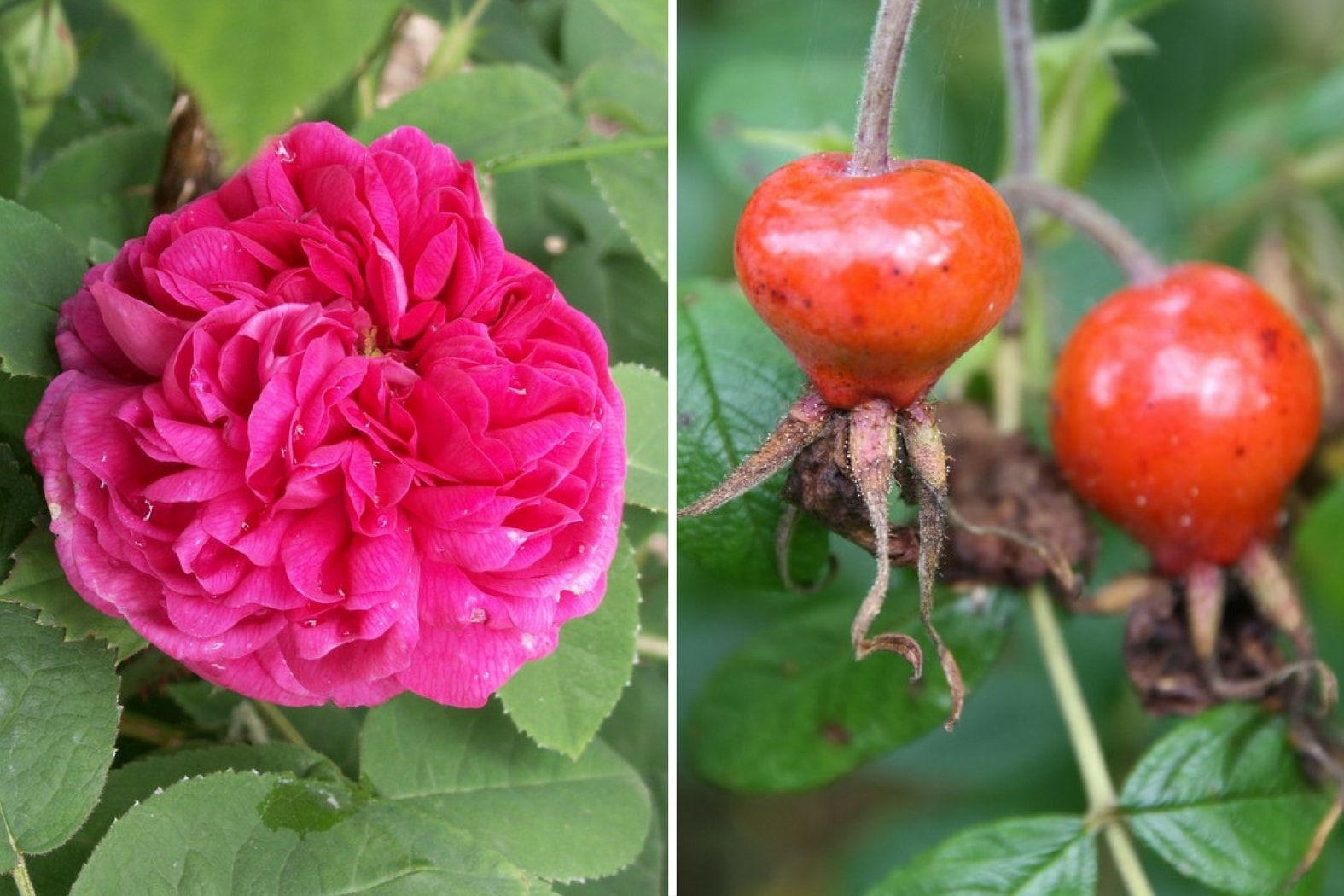
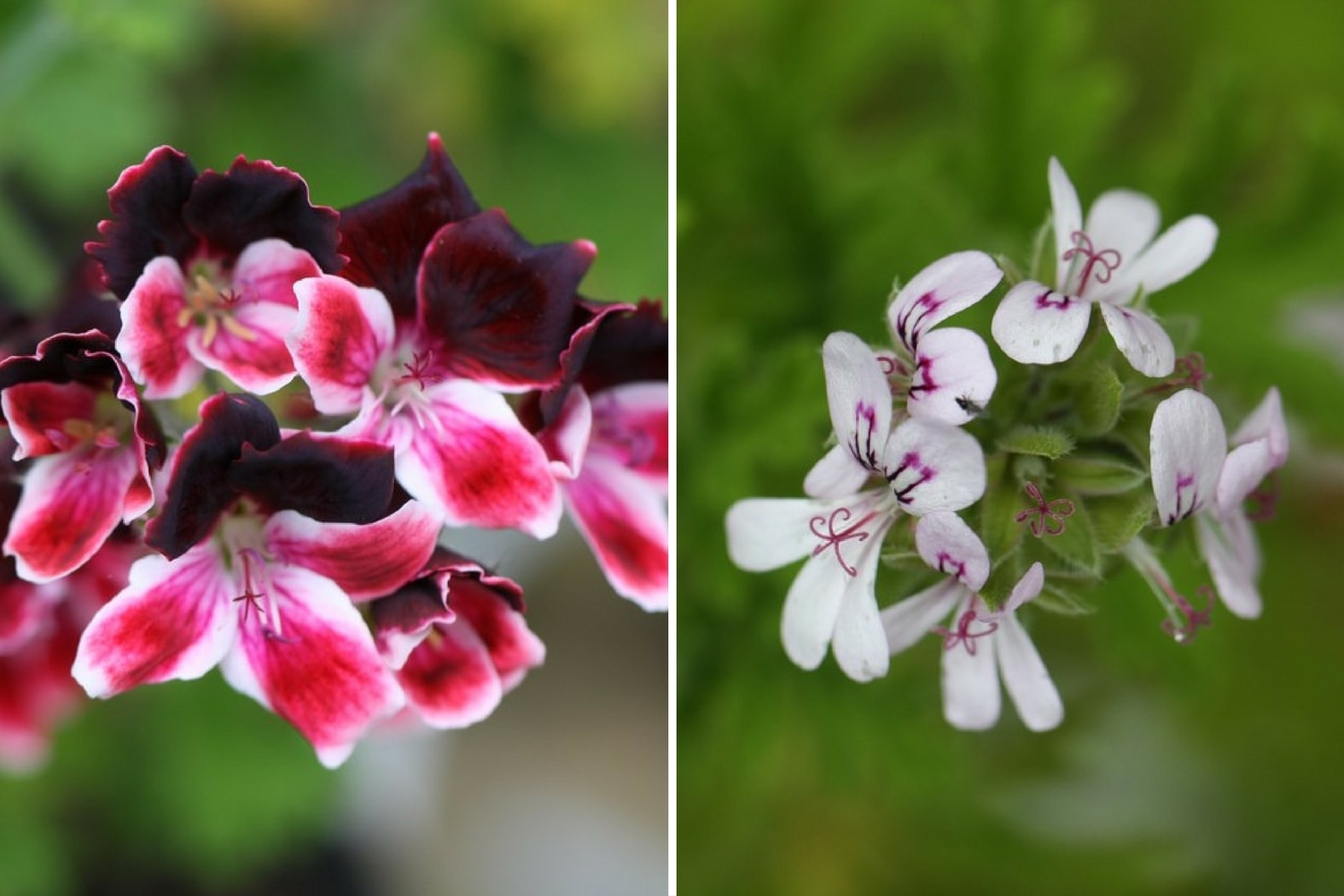
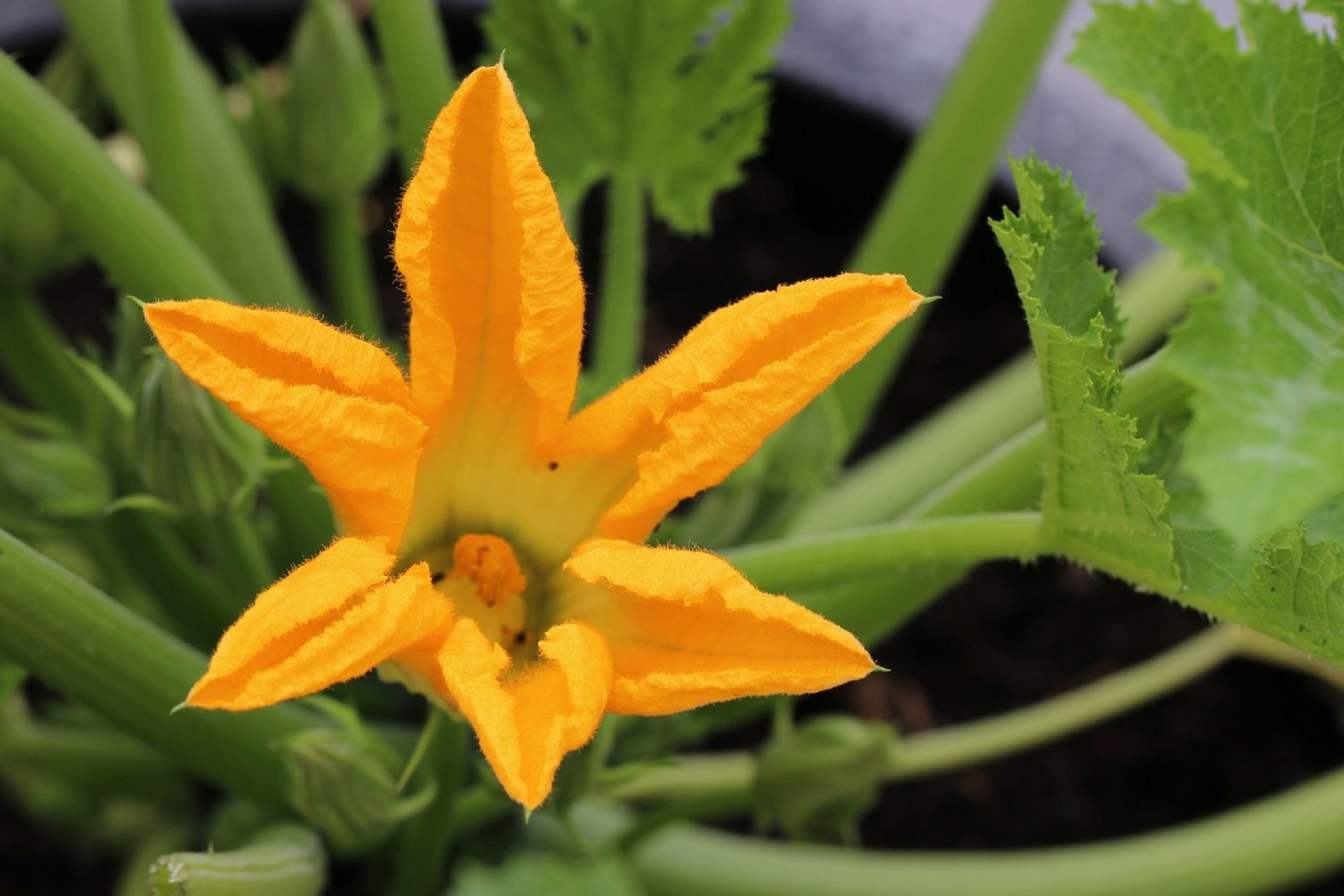
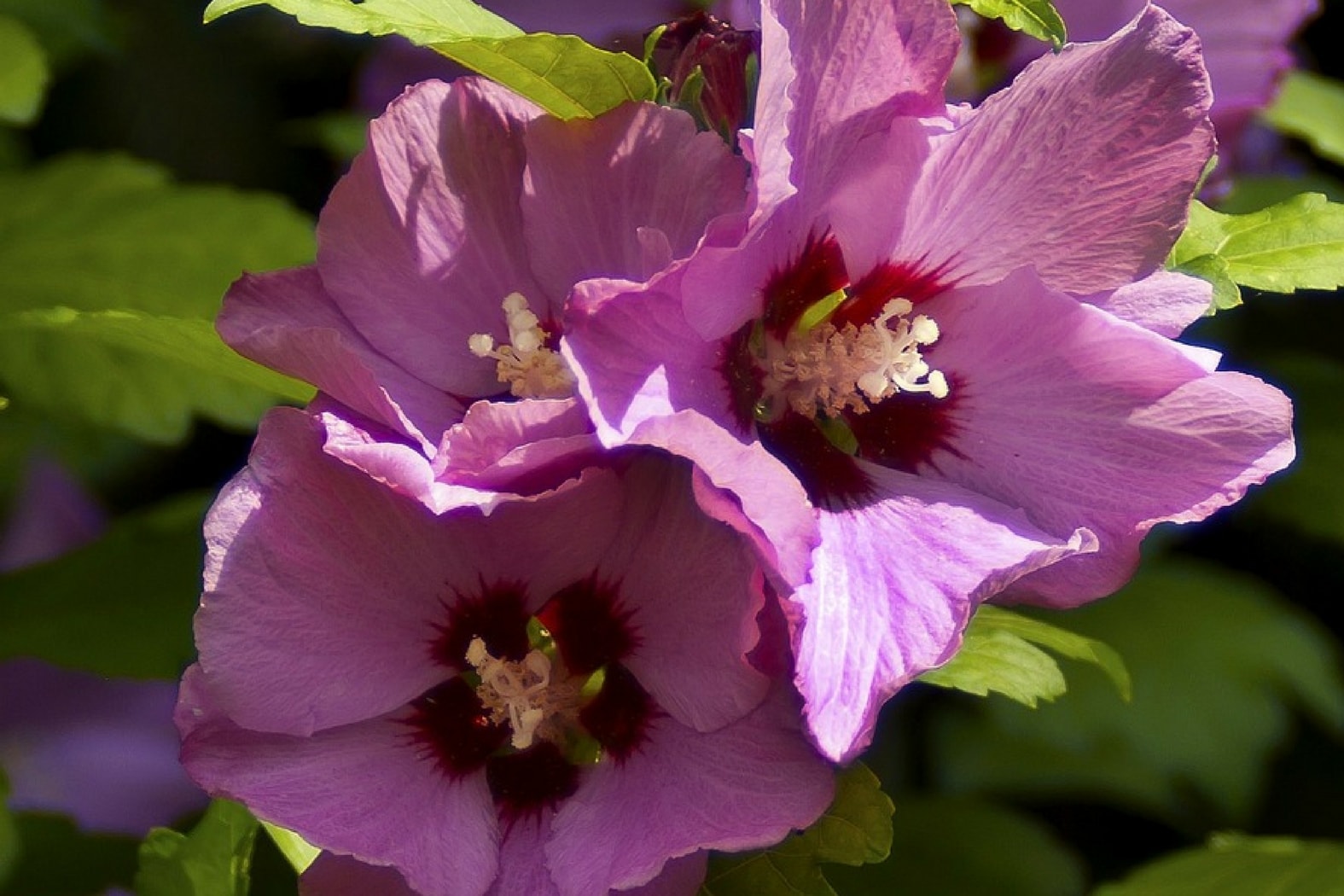
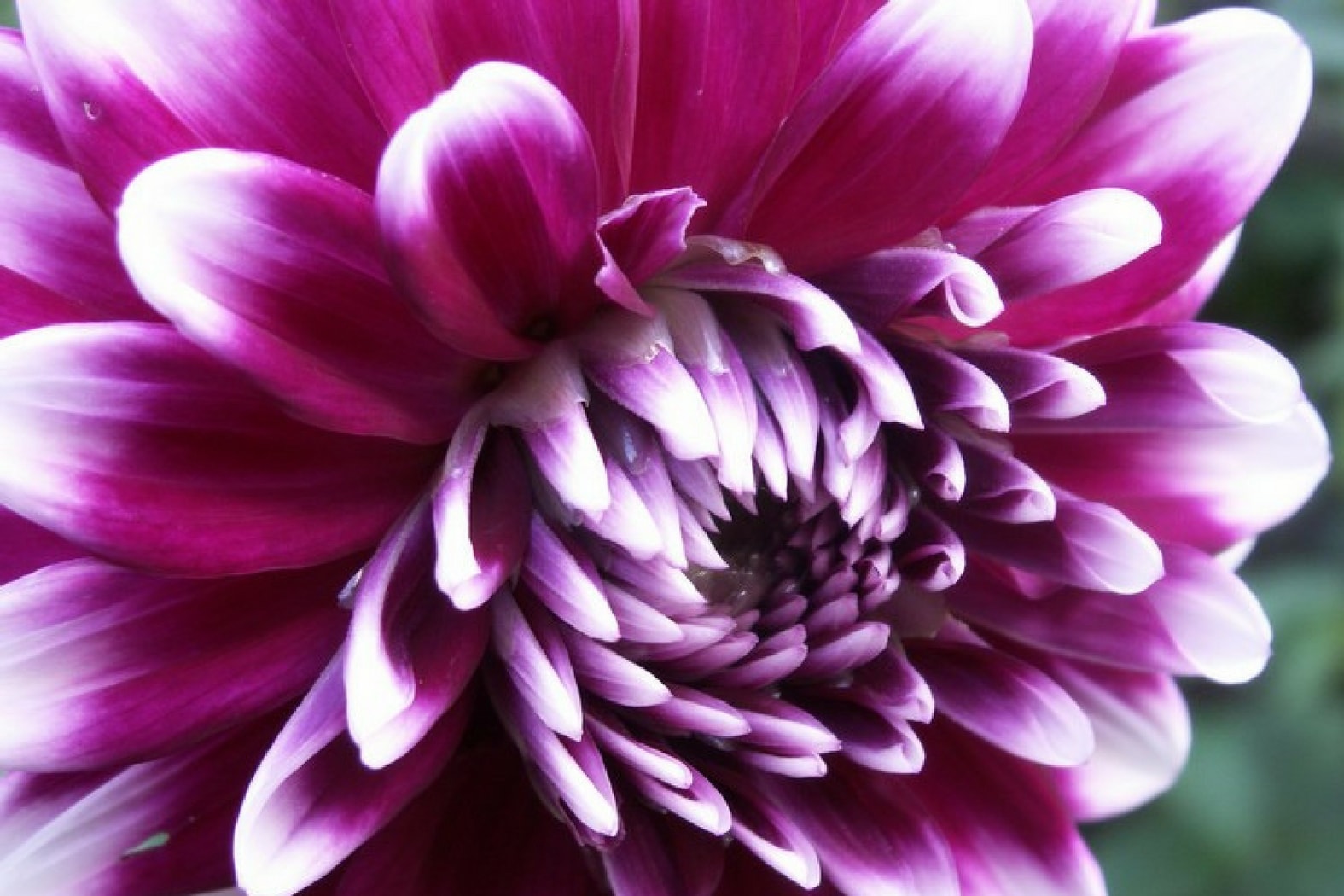
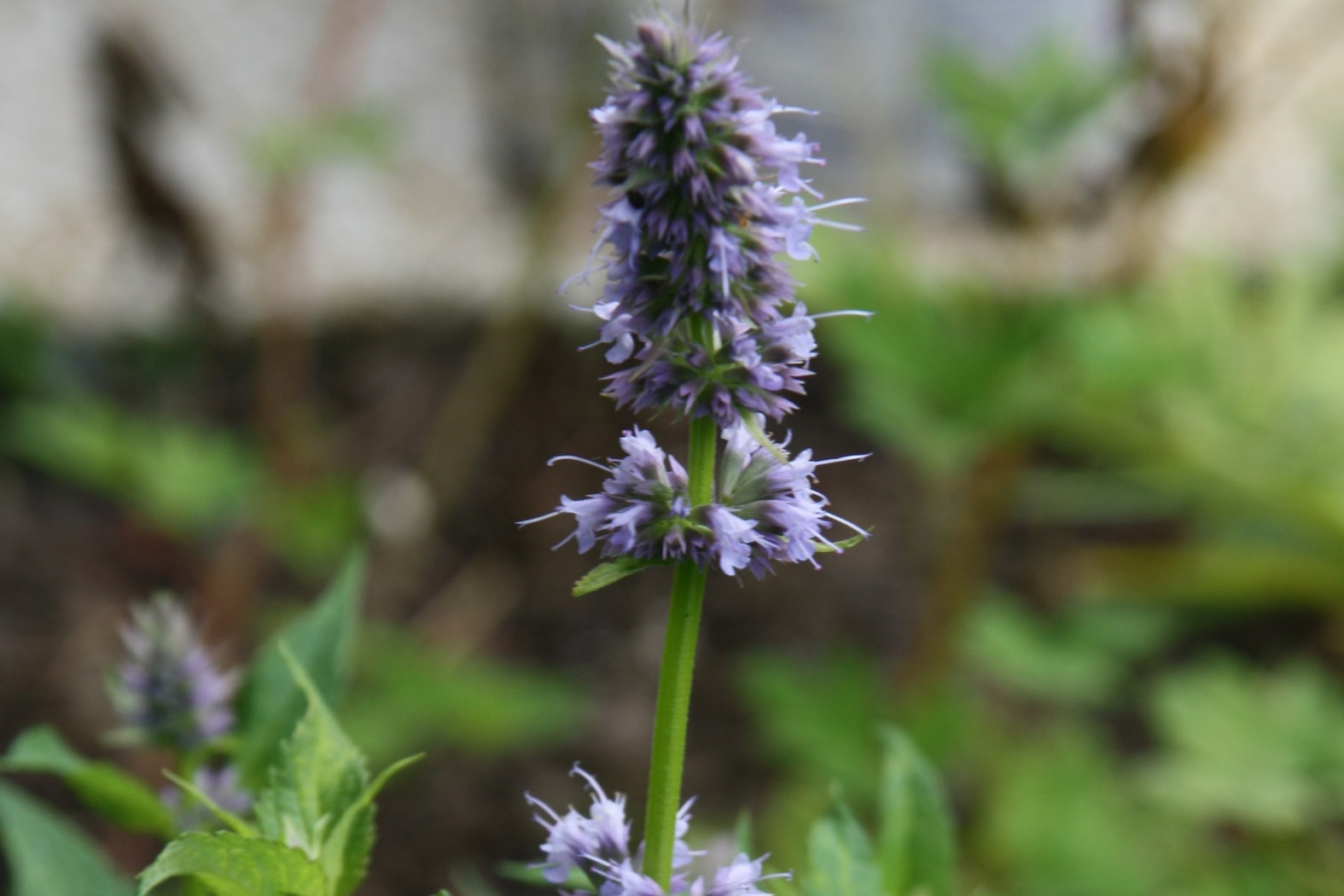
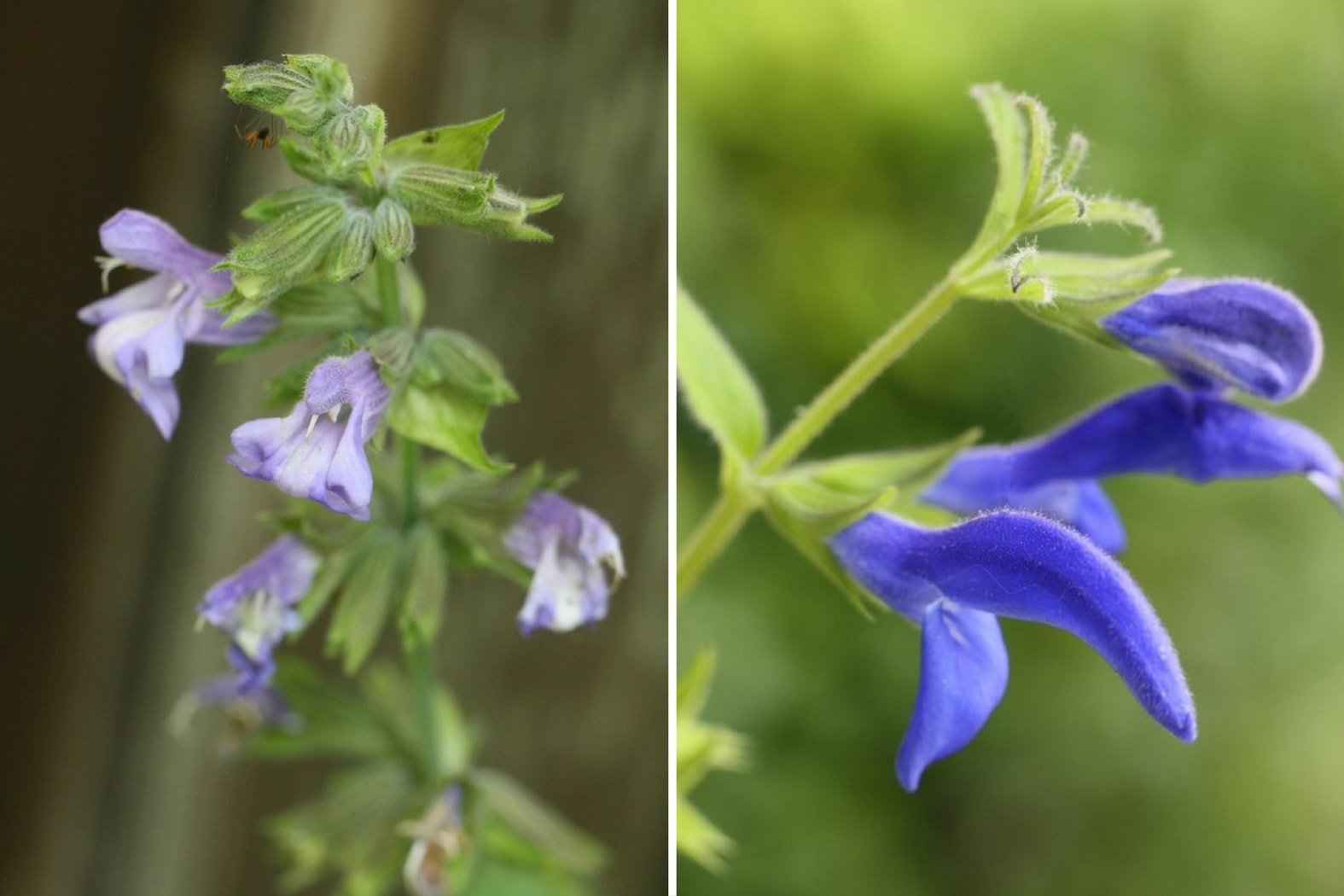
Comments